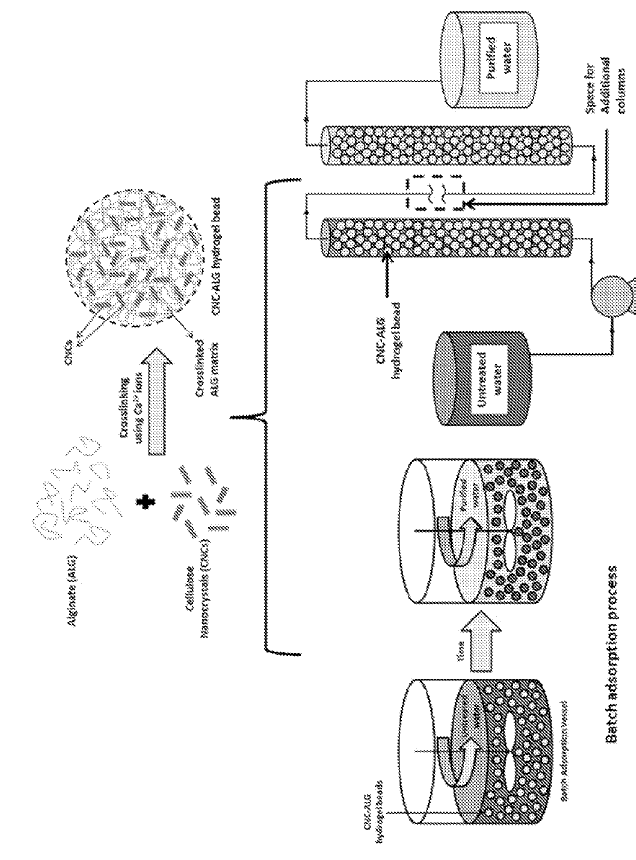Background
Adsorbents based on sustainable nanomaterials from nature have attracted significant attention and are the subject of research. Cellulose is the most abundant renewable material found in nature which contains amorphous and crystalline domains. Cellulose nanocrystals (CNCs) are obtained by an acid hydrolysis of native cellulose using an aqueous inorganic acid like sulphuric acid. This technology relates to relates to the use of pristine and surface functionalized cellulose nanocrystal (CNC) incorporated hydrogel beads as adsorbent materials for water treatment applications. Which for practical use in the removal of contaminants using high surface area nanoparticles, the separation and removal of the nanoparticles from the aqueous solution is a challenge. Waterloo researchers have developed a strategy of embedding these CNC nanoparticles in a hydrogel gel matrix containing either chitosan or alginate.
Description of the invention
Waterloo researchers have developed a technology that provides a process for removing contaminants from water using contacting hydrogel beads incorporating cellulose nanocrystals (pristine or functionalized) comprises matrix of cross-linked natural or synthetic polymers. This technology also provided a method of preparing these hydrogel beads incorporating CNC.
Examples of contaminants that may be removed from water include: dyes, (especially cationic dyes) such as Methylene blue, Methyl violet, Crystal violet, Rhodamine B, Ethyl violet, Bismark brown, Crysodine Y, Auromine O etc. In addition, contaminants that may also be removed from water include heavy metal ions such as Cu2+, Zn2+, Cr (III), Cr (IV) Cr (VI), Pb2+, Hg2+, Ni2+, As (III), As (V), Mn2+, either alone or in combination. Finally, contaminants further include naphthenic acids (e.g. from oil sands) and various other organic and inorganic contaminants in water.
Advantages
The proposed technology offers a green strategy to prepare absorbents from renewable resources. These high surface area absorbents exhibit performance as good as activated carbon. The advantage of our system is that they are produced from sustainable resources green and low temperature process, formulated into porous beads. These absorbents can be deployed into packed columns or stirred tanks to remove contaminants.
Potential applications
- Environmental cleanup application
- Contaminants removal

Reference
10123
Inventor(s)
Dr. Michael Tam
Nishil Mohammed
Nathan Grishkewich
Patent status
US Patent application 14/976,564 filed on Dec. 21, 2015
Stage of development
Prototype
Contact
Scott Inwood
Director of Commercialization
Waterloo Commercialization Office
519-888-4567, ext. 33728
sinwood@uwaterloo.ca
uwaterloo.ca/research